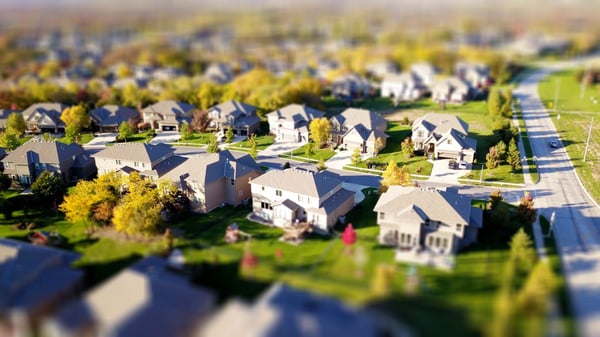Previously, we discussed custom vs. semi-custom building. Some of it seems self-explanatory, some not as much. Now we focus on semi-custom and production building. These two types of builds are very similar, but there are some important differences to note. When you understand the difference between these two, it will be easier to decide which style of build to use for your next project.
Semi-Custom Building
As stated before, Spartan Homes Inc. defines it perfectly, “Semi-custom is simply taking a set of plans or another house for inspiration and adapting it to your own style and preference without starting from complete scratch.” This means that your customer does not have to come up with their own floor plan or design features. They are given options to choose from, which means the builder can order materials in bulk because their builds will be similar.
Semi-custom build homes are typically on land owned by the buyer. If they did not own the land prior to the build, the land will be included with their mortgage.
ProBuilder.com shares, “If you can order a coffee 20 different ways,” the founder and CEO of Schumacher Homes says, “it shouldn’t be any different when you’re buying a house.”
Production Building
Production builds use the semi-custom method but offer fewer options and produce homes in bulk. While semi-custom builders have some flexibility in design and features, production builders are more restrictive. This is because they build hundreds of homes each year and buy their materials ahead of time, anticipating their projects. If a buyer wants adjustments to the floor plan, the changes allowed will be minimal. The buyer will also have less opportunity to change design features. Again, this is because production builders pre-purchase a number of materials to keep on-hand. They have set designs they work with and seldom vary from them.
FreshHomes.com lists several pros and cons of production building. Pros include offering fixed prices, they negotiate the best deal with contractors allowing them to pass savings on to the buyer, they’re faster and may offer development amenities. Production builds occur in new subdivisions and developments because of the sheer number of homes being constructed. With that come things like playgrounds, community pools, clubhouses and more. The cons include being restricted to existing floor plans, customizations are limited and fixture choices are limited.
While both styles of build are similar, semi-custom builds fall in between custom and production. Custom homes offer the buyer full design power. Semi-custom homes offer the buyer a set of floor plans, but the option to make changes and adjustments based on desires and needs, and they can occur on a pre-owned lot whether it’s in a residential subdivision or sitting on acres of property. Production builds typically occur in developments, their design features and fixtures are pretty well set with little flexibility in the offered options. Some flexibility may exist, depending on the builder and the design, but most of the time they prefer to stick with their given plans.
Semi-custom and production building are similar, but not the same. When you’re deciding on what type of build to use for your next project, ask yourself what your end goal is. Will your project be a single home, several homes, a full subdivision or something else? Will you offer a set of floor plans, and if so, how customizable are you willing to be? Knowing the difference between these three types of builds is crucial to determining how you want your next project to go.

Recent Posts
- Spec Home Loans: Complete Guide to Construction Financing for Builders
- Spec Construction Loans: A Spec Line of Credit Is Worth the Paperwork
- Spec Homes and Pre-Sale Homes: Relative Benefits for a Spec Builder
- Spec Construction Success: Insights for the Investor Builder
- How Is a Spec House Different From Other Kinds of House Construction?
